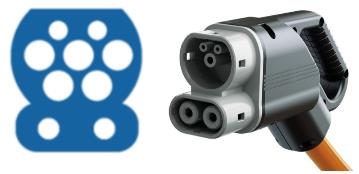The J1772 charger has quickly become the standard “go-to” charger for manufacturers in the US, with the vast majority of battery electric vehicles and plug-in hybrids making use of it. The most notable exception from the J1772 is, of course, Tesla, but there are also some Japanese brands such as Nissan cars that are still using CHAdeMO connectors for fast DC charging.
As Tesla works to expand access to its Supercharger network, and manufacturers continue to adhere to the J1772 configuration as the main standard, the plug has become the chief mainstay in the EV world.
It seems there will always be some exceptions, but what it also means is that it’s worth gaining a greater understanding of the J1772.
In today’s blog, we’re taking a look at the overall charging speed of the J1772 connector, as well as a few other aspects regarding its operation.
Background: What is the J1772 Charger?
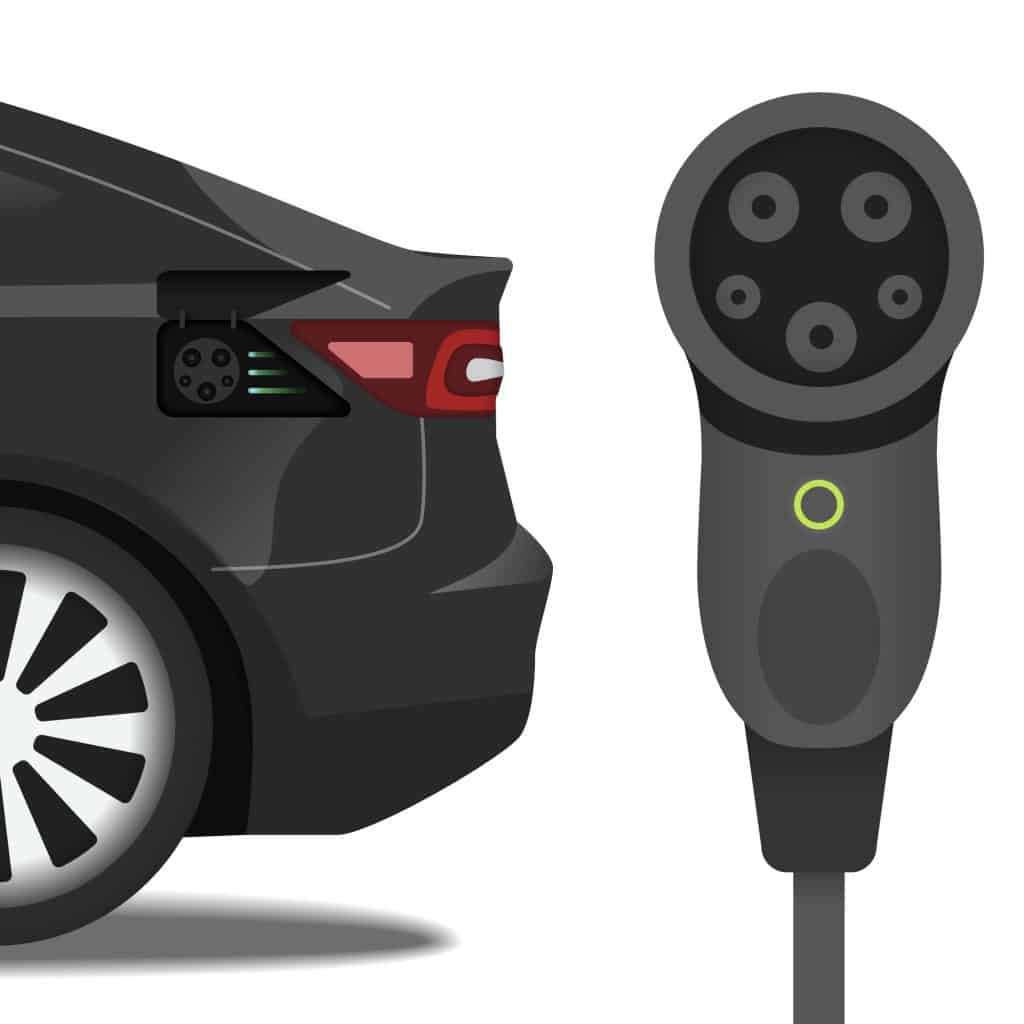
The J1772 configuration charger rose to prominence as the battery capacity and single-charge range of battery electric vehicles started to increase.
Back in 2011 when mainstream electric vehicles couldn’t even offer a hundred miles of range, the use of 120V level 1 chargers with J1772 connectors was absolutely possible to recharge an electric car like a Nissan Leaf overnight.
The same can still be said of many plug-in hybrid models today where the total range to be recharged often lies between 25 and 35 miles.
However, as the capabilities of electric cars roared ahead, and range rocketed up to 120, 150, and then to 200+ miles, level 1 charging solutions had to be replaced with the level 2 systems.
Where a level 1 charger might give 4-5 miles of range per hour of charge, a level 2 charger could multiply that many times over, delivering some 20-65 miles of range per hour depending on the system being used. These level 2 systems came with new cords and new connectors, such as the J1772.
The J1772s quickly became the industry standard for North America’s level 2 charging network, with the biggest exception being Tesla, who were long using their own plug. Even Tesla had to acknowledge the ubiquity of the J1772, however, offering an adapter as a standard accessory on many models for years that allowed Tesla drivers to plug in to any public charging station or home wall box setup.
On the face of the J1772 one can see a 5-pin interface, with 2 holes at the top, and then an arrangement of 3 additional holes on the bottom row:
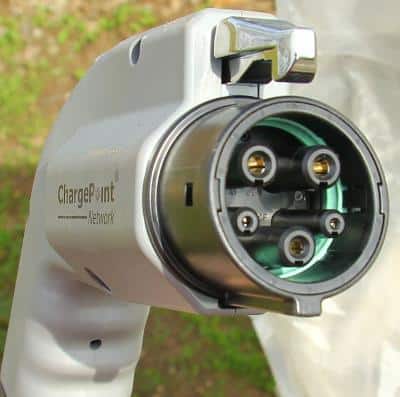
This interface has become so ubiquitous that it is also used as the top section for the new SAE Combo DC fast-charging interface, known as CSS. The CSS is set to become the global standard, even replacing CHAdeMO in new Nissan models like the Nissan Ariya — but of course Tesla remains as the unique outsider.
How Does It Work?
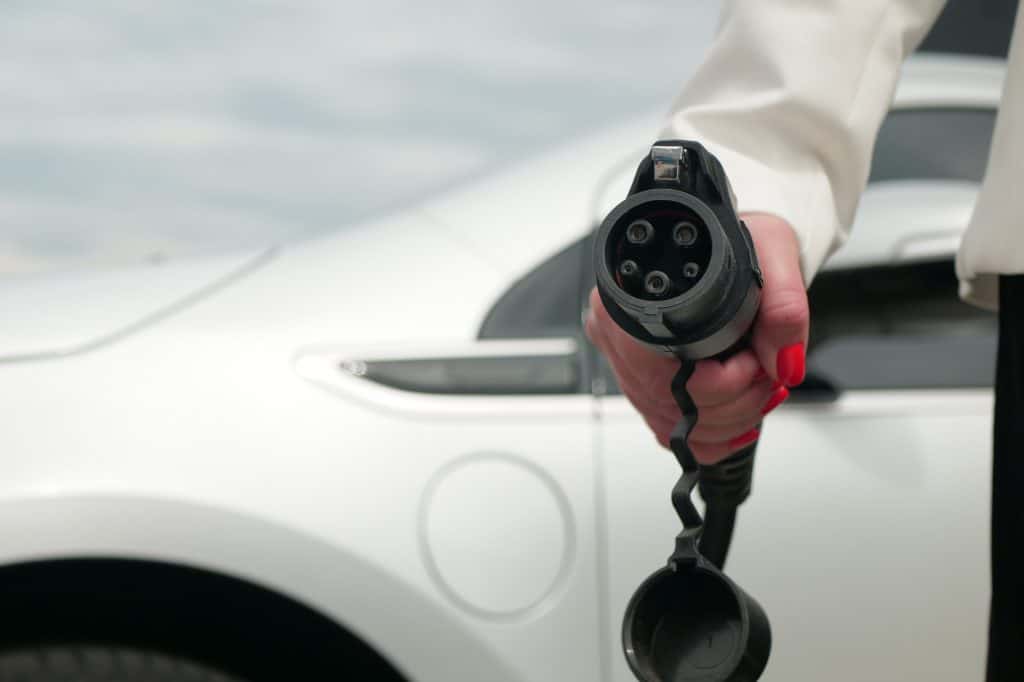
Without getting overly technical, the J1772 is designed for single-phase charging on the AC system, using either a 120V current or a more powerful 240V. The round connector head has a diameter of 43mm (1.7 inches), and has 5 pins:
- Top Row – L1 (AC Line1) and N (AC Neutral).
- Middle-Bottom – PP (Proximity Pilot), and CP (Control Pilot).
- Bottom – PE (Protective Earth, Ground).
It is built as standard to withstand about 10,000 mating cycles, which means if one were using their J1772 once each day, the lifespan should reach about 27 years. When in use, the J1772 locks in place to prevent accidental removal or dislodging of the connector, such as if someone were to trip over the wire.
These locks can be released using a simple plastic release switch on the top and/or side of the connector.
As we have introduced in previous blogs, these connectors often come with additional security measures from the car manufacturer to prevent them being removed mid-charge by other EV owners, or from being stolen altogether.
Is J1772 a Fast Charger?
The J1772 in its common level 2 form is faster than a level 1 AC connection, but not as fast as any DC fast-charging connection. It should also be remembered that the J1772 itself is not a charger, though some people do talk of it as one.
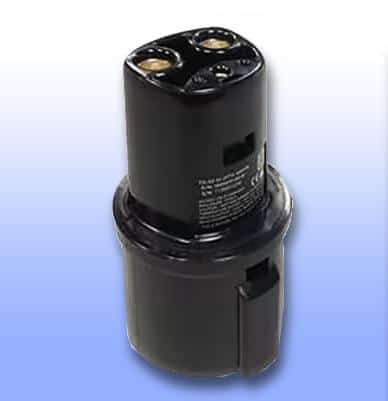
The correct term for the J1772 is simply a “connector” or, more formally, a piece of electric vehicle supply equipment (EVSE). The main function of the J1772, after all, is to supply AC power to the vehicle’s built-in on-board charger. Once there, it is converted to direct current (DC), after which it can be used to charge the battery.
As for the speed of the J1772 connection, it depends on a number of things, most importantly the outlet to which it’s attached:
- A household NEMA 5-15 outlet might only deliver about 1.44 kW of power (about 12 amps) when using a 120-volt system, for instance.
- But that goes up to 80 amps or 19.2 kW if using a 240-volt system.
The latter can be used when the charging equipment is hardwired into the power supply and can thus allow more power through.
A typical level 2 charging system that makes use of the J1772 connector will deliver about 20-25 miles of range per hour. That means you could charge a 250-mile-range EV from nothing to full in about 10 hours or so.
When you consider that most charging cycles are actually done from around 20 percent up to 80-85 percent battery life, then that shortens the charging time significantly.
What Is the J1772 Max Charging Speed?
The maximum output of a J1772 level 2 charger is 19.2 kW, which means that its maximum charging speeds are still far lower than those offered by level 3 DC fast chargers. With this kind of power output, the absolute fastest one might expect to charge a PHEV would be an hour, and a small-capacity BEV in about 4 hours.
All such times, however, are dependent on the individual settings of different chargers and systems. The J1772 is a connector and EVSE rather than the charger itself, so it’s not the source of power.
Charging times would be extended if, for example, an EV driver manually turned down the amperage of their charger in order to offer a slower stream of charging power. Some do this when there is less pressure on charging time, and when they want to do what they can to maintain battery health.
Slower, steadier charging does far less harm to battery chemistry than faster, more aggressive charging.
What Are the Pros and Cons of the J1772 Charger?
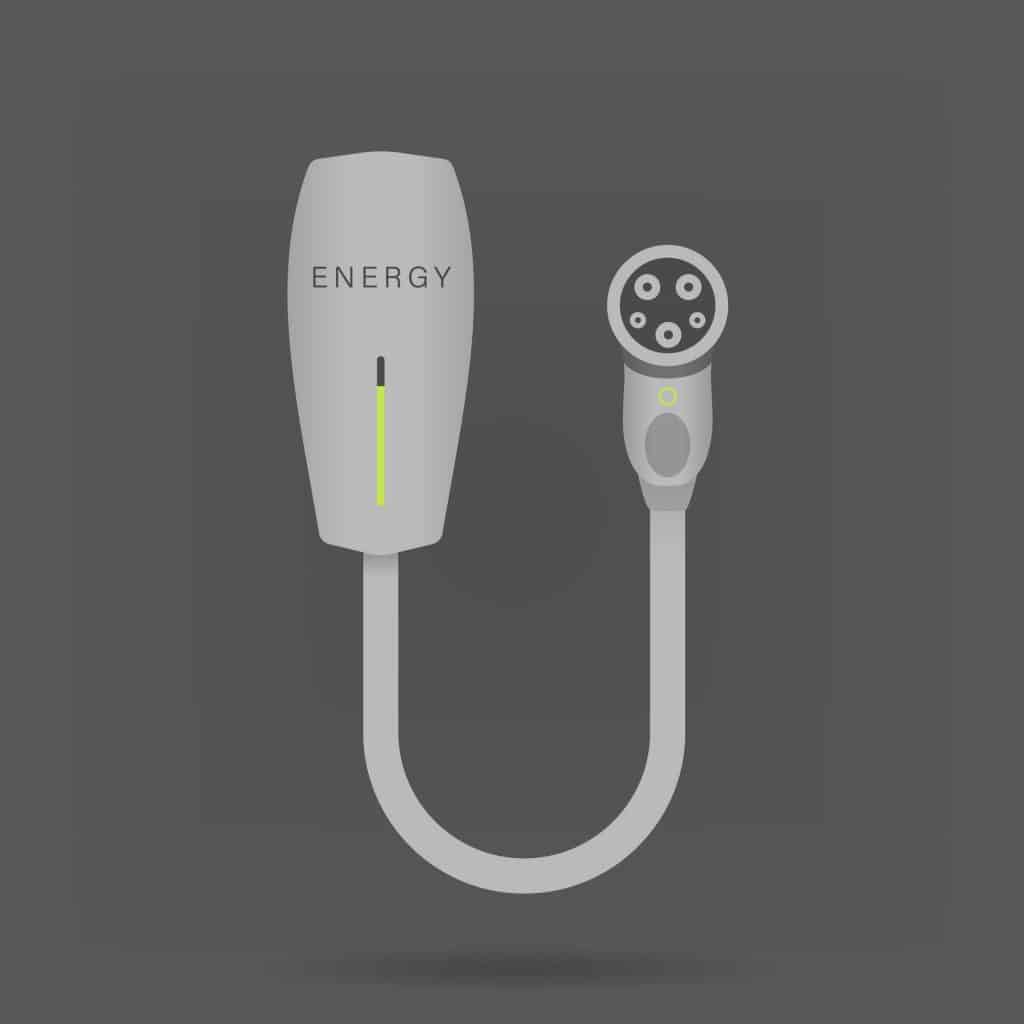
Pros
- The J1772 has been extensively tested and proven to be reliable and sturdy. It is also well-tested for waterproofing and shock proofing, making it safe to use even in wet conditions.
- Having a J1772 connector allows you to directly plug in to all public charging systems except Tesla, without the use of any adapters or other equipment. The additional need for adapters sometimes can compromise security.
- With a J1772, you therefore have far more options when it comes to charging locations. This is in contrast to CHAdeMO users in particular, whose choices of DC fast charging spots is quickly diminishing.
- Despite early problems with security, the J1772 can now be well secured when charging in public. This makes it safer from thieves and those wishing to push ahead in the charging queue.
Cons
- The European standard 2 version is already more secure and more advanced than the J1772, but still the latter endures. Changing would be costly and troublesome for millions of people.
- You can’t use your J1772 to connect to Tesla Superchargers (yet). This means you can’t use the full range of charging services available to you out there.
What Are the Alternatives to the J1772?
The main alternative to the J1772 currently is the standard 2 charger that is used in Europe, for instance, which works on the same principles as the J1772, but includes some additional security features that make it harder for thieves and impatient drivers to remove the cable while you’re mid-charge. The standard 2 charger also has a greater number of pins.
The other main 2 alternatives are both used for DC fast charging, namely CHAdeMO, and CCS. The former is a standard used by some Japanese brands such as Nissan, but is now being steadily phased out and replaced with the latter. CCS features a top section like that of the J1772, and a bottom 2-pin configuration to connect with DC fast chargers:
